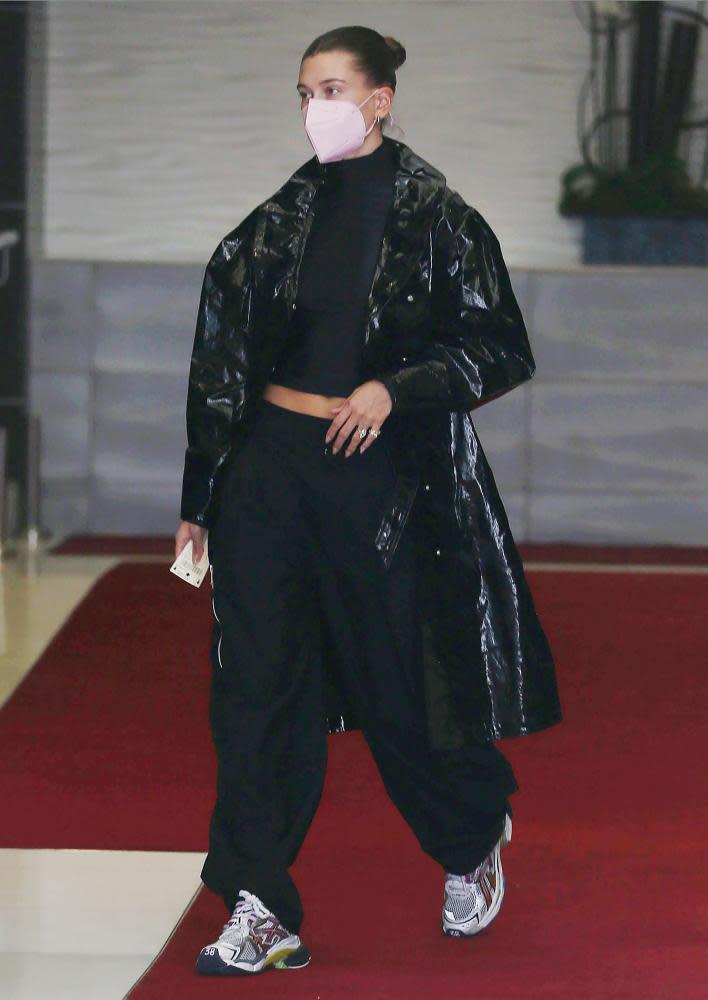Dystopia-core: what is the new pandemic-era punk look?
Continuing the grunge and goth revival, the look takes inspiration from sci-fi fantasies such as Dune
Sick of sweatpants? A new fashion trend that swaps elasticated waistbands for harder, more utilitarian clothing could be right up your street.
Taking inspiration from dark cinematic fantasies such as The Matrix Resurrections and Dune, “dystopia-core” comes as we approach the third year of pandemic living.
Dystopia-core, which is in direct opposition to “dopamine dressing” – wearing overtly fun clothes to help lift your mood – can be seen as the next step of the grunge and goth revivals.
“Fashion statements often have an element of defiance. In this particular case the defiance is the darkness and dystopian aspect,” says the trend forecaster Geraldine Wharry. “The idea that optimism is not cool and doesn’t reflect our current times, similar to what punks stood for during the 70s.”
The items that have come to define the trend – long leather jackets and cargo trousers – have both had bumps in popularity. Online searches for the former have risen by 117% between the third and fourth quarter of last year while searches for cargo pants have increased, year on year, by 45%, according to Jewellerybox.co.uk.
Dystopia-core can also be seen on TikTok, where the DIY trend of draping thinly textured clothes over one another to create an angular, futuristic look has been gaining popularity. Nicknamed “avant apocalypse”, the hashtag has more than 265,000 views on the social media app.
“People have stopped the rather passive onesie/pyjama stay-at-home, work-from-home-in-your-comfort-clothes trend and realise that they need to be more active and get out – and to do that, you need to be wearing something more functional, more resilient – and more classy,” says Nick Groom, the author of The Vampire: A New History.

It is, says the fashion professor Zara Anishanslin, a reaction to the current post-apocalyptic atmosphere.
“The experience of living through a pandemic is somewhat like that of living through a war: both are traumatising collective experiences, both have people battling on the ‘frontlines’, both result in a distressingly large number of deaths,” she says. “Given these similarities it makes sense that fashion originally popularised by military use would see a resurgence.”
Francesca Granata from Parsons School of Design sees these clothes as a kind of armour against the hostile outside world. “In the last two years we have been constantly thinking about protecting ourselves from outside pathogens so it is not hard to see how clothes can function, at least symbolically, as an extension of this shield that we have been creating around us,” she says.

“One response to [the pandemic] is to try to develop a durable, self-contained, sustainable image,” says Groom, “not blur it with fringes and scarfs and tassels, but by making the human form sleek and sharply defined.” The largely black and ominous clothes worn by the new couple Kanye West and Julia Fox – all made by Balenciaga – speak to this look.
As well as Balenciaga, fashion labels such as Khaite and A-Cold-Wall* are articulating these emotional states.
“The idea of protection is a bit more universal across luxury, contemporary and streetwear now, for sure,” says A-Cold-Wall*’s Samuel Ross, who tackles dystopia-core in his autumn/winter 2022 collection in Milan this week.
“We’ve played with that a bit more in terms of length I’d say and overall volume,” he says. “We’ve always had a utilitarian angle but this season we wanted to bring in a more ‘on the nose aspect’ so we used mottled, hand-painted and fired canvases and twills to convey a sensitivity [to that].”

 Yahoo Movies
Yahoo Movies 
